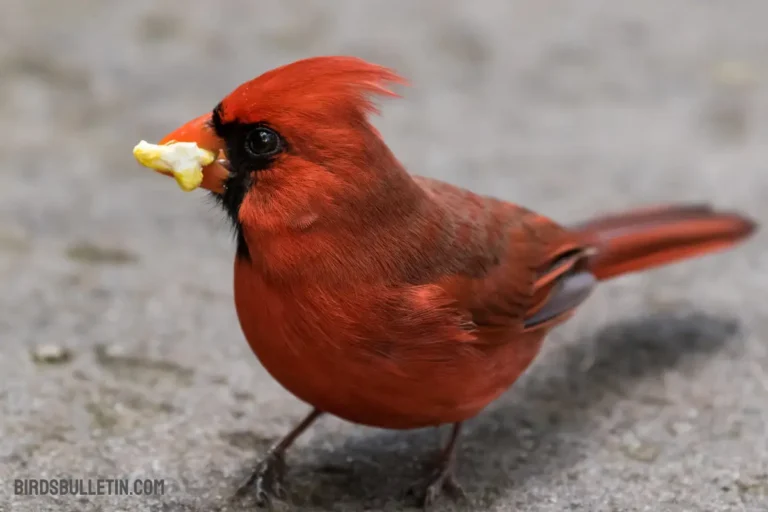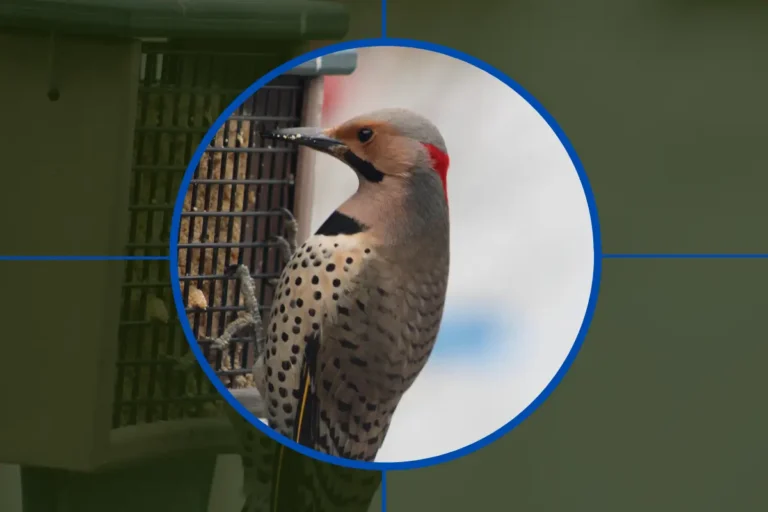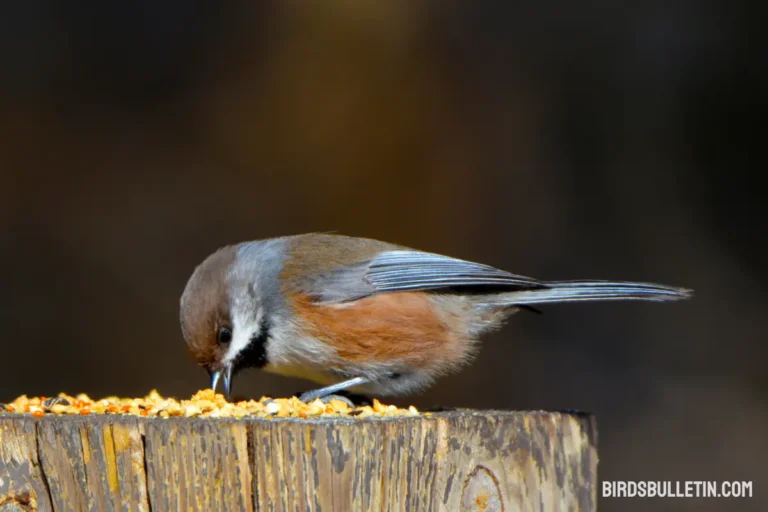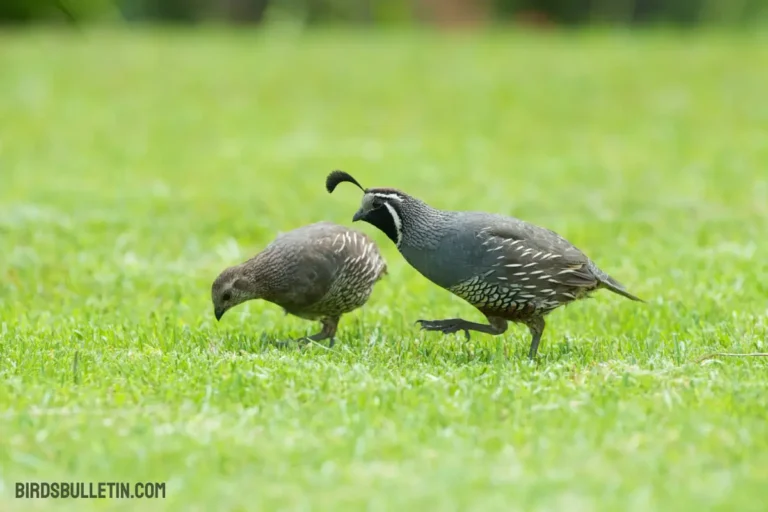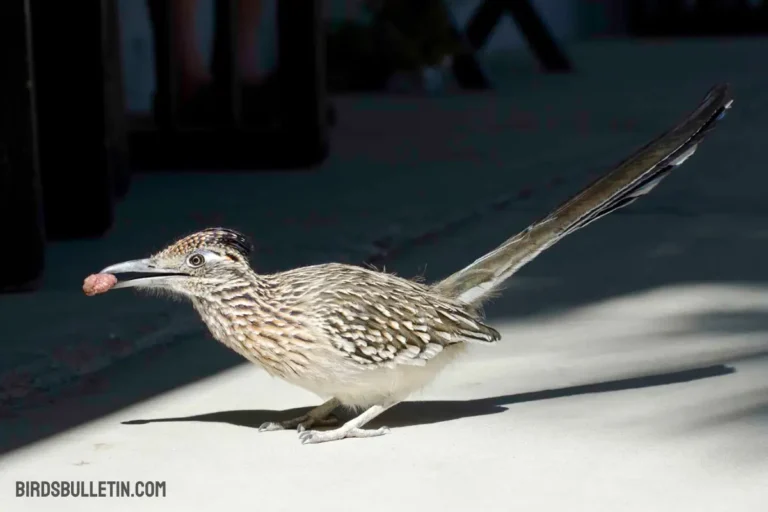What Does Eastern Mourning Dove Eat?
Mourning doves stick close to the ground while seeking food. Their meals predominantly come from seeds and grains discovered along open ground, including grasslands, agricultural areas, backyards, and even paved areas like parking lots.
To digest their food, they grit like sand or fine gravel. This helps their muscular gizzards grind up food. They also visit platform bird feeders and ground feeders to supplement natural foods.
However, studies show that only about 10% of their diet may come from backyard feeders.
Looking for more articles about birds’ food and diet
Favorite Foods of Mourning Dove
The table below shows key natural foods mourning doves seek out:
| Food | Details |
|---|---|
| Grasses and Weed Seeds | Preferred food is year-round. Includes seeds from ragweed, bindweed, clover, millet, foxtail, wheat, corn, and more. |
| Cultivated Grains | Especially fond of cereal grains like wheat, barley, rice, millet, and sorghum. Will take seeds fallen from farm equipment. |
| Pine Seeds | Important autumn and winter foods. Found on evergreen trees and ground. High in fat and protein. |
| Fruits and Berries | Occasionally eaten. Includes blackberries, blueberries, strawberries, and pokeberries. Mainly in warmer months. |
| Insects and Snails | Nestlings fed regurgitated “crop milk” composed of seeds and some insects. Adults opportunistically eat insects like grasshoppers, beetles, ants, and termites. |
How Often Does Mourning Dove Eat?
Eastern Mourning Doves are known for their frequent feeding habits. On average, these birds feed multiple times throughout the day, with their daily routine revolving around finding and consuming food.
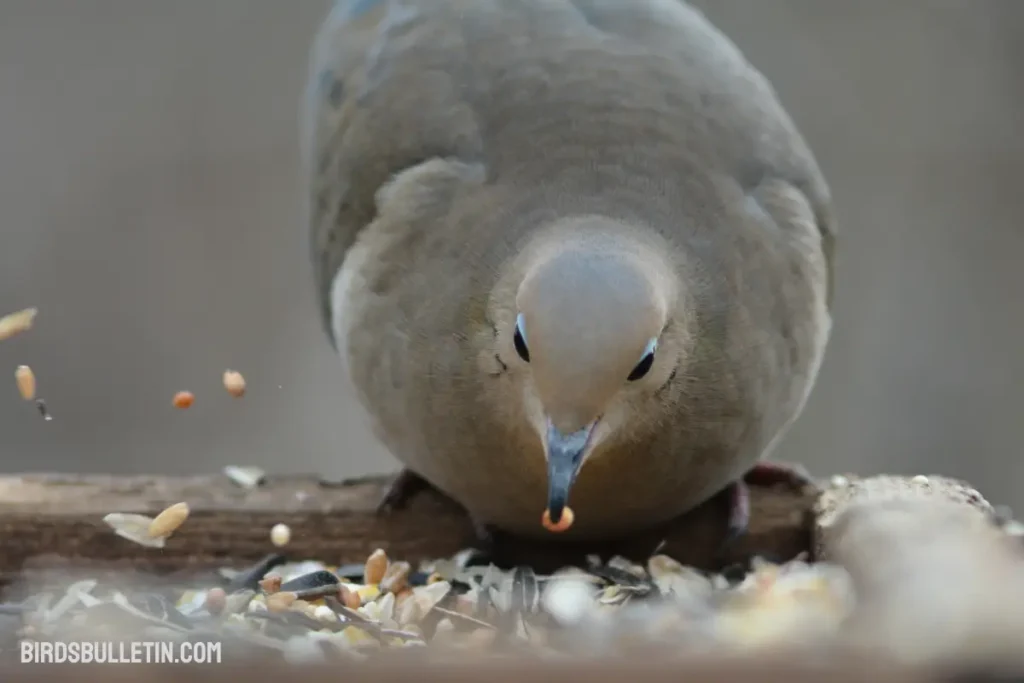
Their high metabolism requires a constant intake of energy, making regular feeding a necessity for their survival. The frequency of their meals may vary based on factors such as the availability of food sources and environmental conditions.
What Time of Day Do Mourning Dove Feed?
Mourning doves are diurnal, meaning they are most active during daylight hours. Their feeding patterns typically follow this diurnal rhythm, with mornings and evenings being the primary times for foraging.
During these periods, you’re likely to observe them on the ground or perched on a bird feeder, eagerly pecking at seeds or grains. While they may feed during the day, these birds are generally more active in the early morning and late afternoon.
How Does Mourning Dove Gather Food?
Foraging on the ground – Morning doves often forage for seeds, grains, berries, and insects on the ground. They use their beaks to pick up food as they walk along searching the ground closely. They have a strong seed and grain diet.
Scratching and digging – Doves will scratch and dig through ground litter and shallow soil to uncover seeds or grains that are buried. Their feet are well-adapted for scratching and digging maneuvers.
Feeding on grasses and low vegetation – Morning doves will sometimes feed on grasses, weeds, low bushes, and other vegetation to eat seeds, berries, and insects located there. They may land briefly to pluck off pieces of vegetation.
Visiting bird feeders – As morning doves become accustomed to human environments and backyards, they increasingly take advantage of bird seed that is put out on platforms, ground feeders, or hanging feeders meant for smaller birds.
Drinking and bathing – Morning doves need a freshwater source to drink from regularly. Bird baths and shallow water dishes draw them in to drink and bathe while also foraging nearby.
What Do Mourning Doves Eat in the Winter?
In winter, food can become scarce for mourning doves in northern parts of their range. But they overwinter as far north as they can find open water and food supplies.
They switch from primarily insects and weed seeds in summer to heavier reliance on persistent seeds from grains, pine trees, Autumn olive bushes, and sumac trees.
Backyard bird feeders become more crucial food sources in winter as less natural food remains uncovered by snow. Stocking various seeds brings mourning doves through the lean months.
What Does Baby Mourning Dove Eat?
Mourning dove young hatch after 14 days of incubation. They grow rapidly on a diet of “pigeon milk” – regurgitated seeds and crop fluids rich in fat and protein.
By 12-14 days old, the nestlings are fed increasing amounts of whole seeds until they fledge. Parents continue tending to the fledglings for another 1-2 weeks as the young practice flying, feeding on their own, and evading predators.
Frequently Asked Questions
01. Do mourning doves migrate to follow food?
They don’t migrate as far as many birds but do move south in winter to regions with warmer weather and better food supplies. Some temperate populations only migrate locally.
02. How do mourning doves crack open seeds and nuts?
They swallow them whole and use their muscular gizzards filled with small stones to grind and digest the hard shells. Their beaks aren’t built for cracking like some birds.
03. Why are non-native plants like autumn olive important food sources of Morning Dove?
Introduced bushes produce copious, nutrition-dense fruits that mourning doves depend on. But in some areas, they crowd out native plants vital for other wildlife.
04. Will mourning doves at my feeder attract predators?
Feeders concentrate on birds and can draw the attention of native and introduced predators. But mourning doves face heavy predation pressure regardless of feeders and have adapted to deal with the threat.
Verdict
Mourning doves exhibit fascinating behavior and physiology linked to their seed-based diet. Monitoring local populations and providing supplementary feeding sites give crucial support come wintertime.
Managing the interplay between native and non-native food plants also helps ensure year-round food security.
References
- Anderson, W. L., & Kershner, E. L. (2007). Mourning Dove (Zenaida macroura), version 2.0. In The Birds of North America (P. G. Rodewald, Ed.). Cornell Lab of Ornithology.
- Alsop, F. J., III. (2001). Birds of North America. Dorling Kindersley.
- National Audubon Society. (n.d.). Eastern Mourning Dove. Audubon Guide to North American


